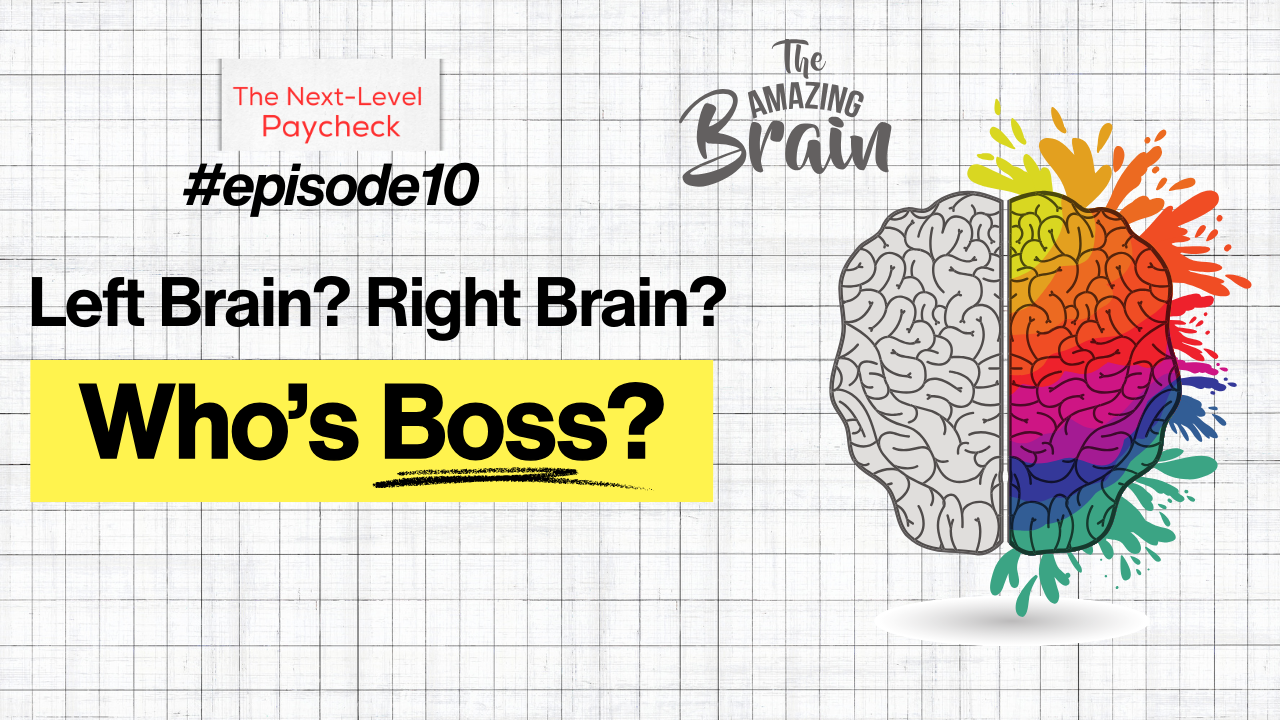“Left brain vs right brain” is a catchy way to describe two different modes of working: one rooted in rules, procedures, and logic; the other centered on design, storytelling, empathy, and pattern-sense. As a leadership scholar (and former systems programmer), I’m the first to say the strict split is oversimplified—but as an archetype, it’s useful. Because the journey from technician to leader often looks like a migration from mostly left-brain habits to a blended style where right-brain leadership skills become decisive.
If you’re a mid-career professional feeling plateaued, this shift is your inflection point. Mastering syntax and SOPs gets you in the room. Learning to read people, patterns, and possibility is what earns you influence.
Left-Brain Archetype—Where Technicians Excel
Left-brain environments reward accuracy, repeatability, and adherence to standards. Think: code that compiles, processes that pass audit, KPIs that stay green.
What It Looks Like
- Rules & Procedures: Clear syntax, step-by-step runbooks, and escalation matrices.
- Predictable Tasks: Logical, repeatable, optimized for efficiency.
- Operator Mindset: When something breaks, execute the protocol.
Story: The Infinite Loop Lesson
In my undergrad days, I wrote my own exe^xex function in FORTRAN using an infinite series… and forgot to tell it when to stop. Worse, I printed every iteration. The operator canceled my runaway job (and my mountain of paper). It was a perfect left-brain moment: rules, safeguards, and procedures rescuing a rogue calculation. Technically humbling. Educational. Necessary.
Leadership takeaway: Left-brain mastery prevents chaos. But it doesn’t, by itself, create progress.
Right-Brain Archetype—Where Leaders Emerge
Right-brain leadership thrives when yesterday’s playbook won’t solve today’s problem. It’s about pattern recognition, problem-finding, empathy, and narrative—the ability to sense what’s really happening and mobilize people around what could happen next.
What It Looks Like
- Ambiguity & Adaptation: Fewer SOPs, more prototypes and “what if”s.
- Pattern-Sense: Seeing weak signals, trends, and root causes others miss.
- People & Meaning: Translating complexity into stories teams can act on.
When markets saturate or routines stagnate, it’s the right-brain mode—curiosity, creativity, and courage—that sparks innovation.
Why the Technician-to-Leader Odyssey Feels So Awkward
As a systems programmer, your value is precision. As a leader, your value is vision. That’s a qualitative leap.
- From Correctness → Consequence: It’s not “Is this procedure right?” but “What outcome will this create for people?”
- From Control → Coordination: You stop holding every lever and start harmonizing many hands.
- From Problem-Solving → Problem-Finding: You don’t just fix defects—you frame the right questions before anyone else sees the issue.
Leaders “conduct from the balcony”—like an orchestral conductor holding the whole score, cueing entries, shaping dynamics, and creating coherence.
When Each Mode Should Rule
Let Left-Brain Lead When…
- Safety, compliance, or uptime is on the line.
- You’re scaling what already works (repeatable process, tight SLAs).
- The task is well-defined and variance is expensive.
Let Right-Brain Lead When…
- The problem is novel, cross-functional, or politically charged.
- Data is noisy and human dynamics matter (influence, trust, resistance).
- You need a story to align stakeholders, not just a status report.
Reality check: Great leaders don’t pick a side. They sequence modes on purpose.
A Practical Blend—Four Moves to Shift from Technician to Leader
1) Translate from Procedure to Purpose
Before: “Here’s the runbook.”
Now: “Here’s the outcome we’re creating—and why it matters.”
- Write one slide per initiative: Problem → Stakes → Desired human outcome → Minimal metrics that prove it.
- Replace 20-step SOPs in leadership meetings with 3-step narratives your non-technical peers can carry.
2) Add Pattern-Sense to Your Dashboards
Before: Only lagging indicators (tickets closed, defects resolved).
Now: Include leading indicators and weak signals (rework rates, cross-team wait time, recurring failure themes).
- Hold a monthly “pattern review” to ask, What’s trying to get our attention?
3) Practice Empathy as a Tool, Not a Tax
Empathy can feel heavy when you absorb others’ frustration. Use it diagnostically: distinguish your emotions from theirs, name what’s unsaid, and design your response accordingly.
- Ask one gentle check-in: “What’s the part of this you’re carrying alone?”
- Then move to action: “What would make this 20% easier this week?”
4) Tell Better Leadership Stories
Right-brain leadership is meaning-making.
- Frame the villain (the real constraint), the quest (the next bold step), and the allies (who must join).
- End with a call to action that assigns clear ownership and a near-term win.
Decision Rhythm—How to Sequence Left & Right in the Same Meeting
- Open with a Beat (Pause). Claim 10–20 seconds of silence after tough questions. That pause signals authority and lets your brain recruit both modes.
- Start Analytical. Share the minimum facts and constraints (left-brain credibility).
- Quickly Shift to Meaning. Why it matters to customers, colleagues, mission (right-brain resonance).
- Co-Design Options. Invite two contrasting paths (optimize vs. innovate) and discuss trade-offs.
- Close with a Clear Next Step. Who does what by when—and how we’ll learn.
This rhythm calms highly procedural rooms and energizes creative ones.
Common Pitfalls (and How to Avoid Them)
Pitfall 1 — Over-Indexing on Procedures
You reduce everything to checklists and stall progress on ambiguous problems.
Fix: Define “what success feels like” for real people before you write the process.
Pitfall 2 — Performing Creativity Without Constraints
Brainstorms with no guardrails waste political capital.
Fix: Set one non-negotiable constraint (budget, timebox, or risk limit) and innovate within it.
Pitfall 3 — Empathy Burnout
Absorbing everyone’s stress blurs judgment.
Fix: Use empathy to diagnose, then switch to design: boundary, plan, follow-up.
Conclusion: Lead with Both—On Purpose
You don’t have to choose between being a meticulous technician or an inspired leader. The most effective leaders blend modes: left-brain precision to protect what matters; right-brain imagination to invent what’s next. The real promotion isn’t the new title—it’s the new way of thinking.
Call to Action
This week, pick one initiative and run it with a blended playbook: open with a 30-second pause, share three left-brain facts, tell one right-brain story about why it matters, and end with a crisp next step. Do that consistently, and you won’t just be seen as competent—you’ll be felt as credible, human, and visionary.







